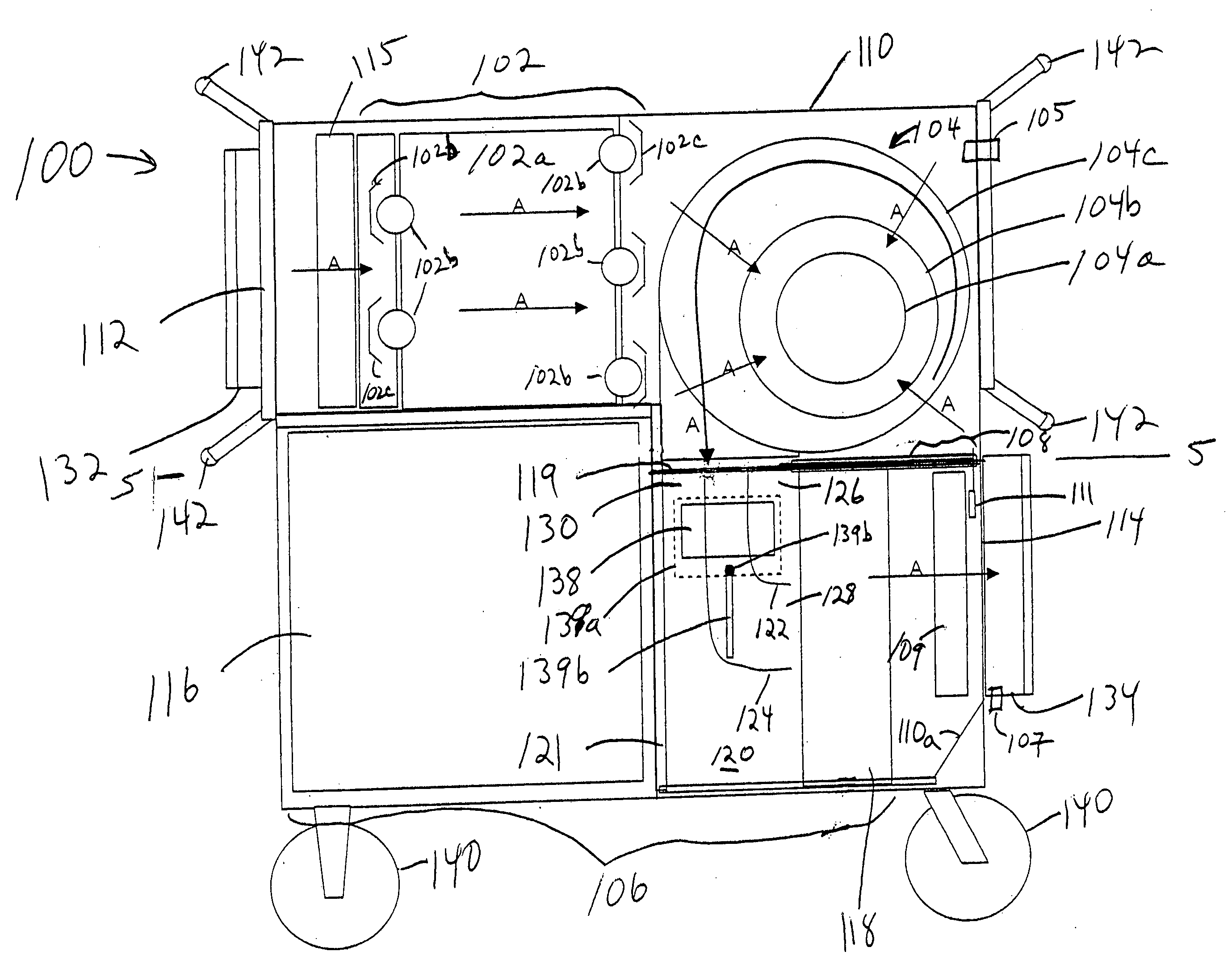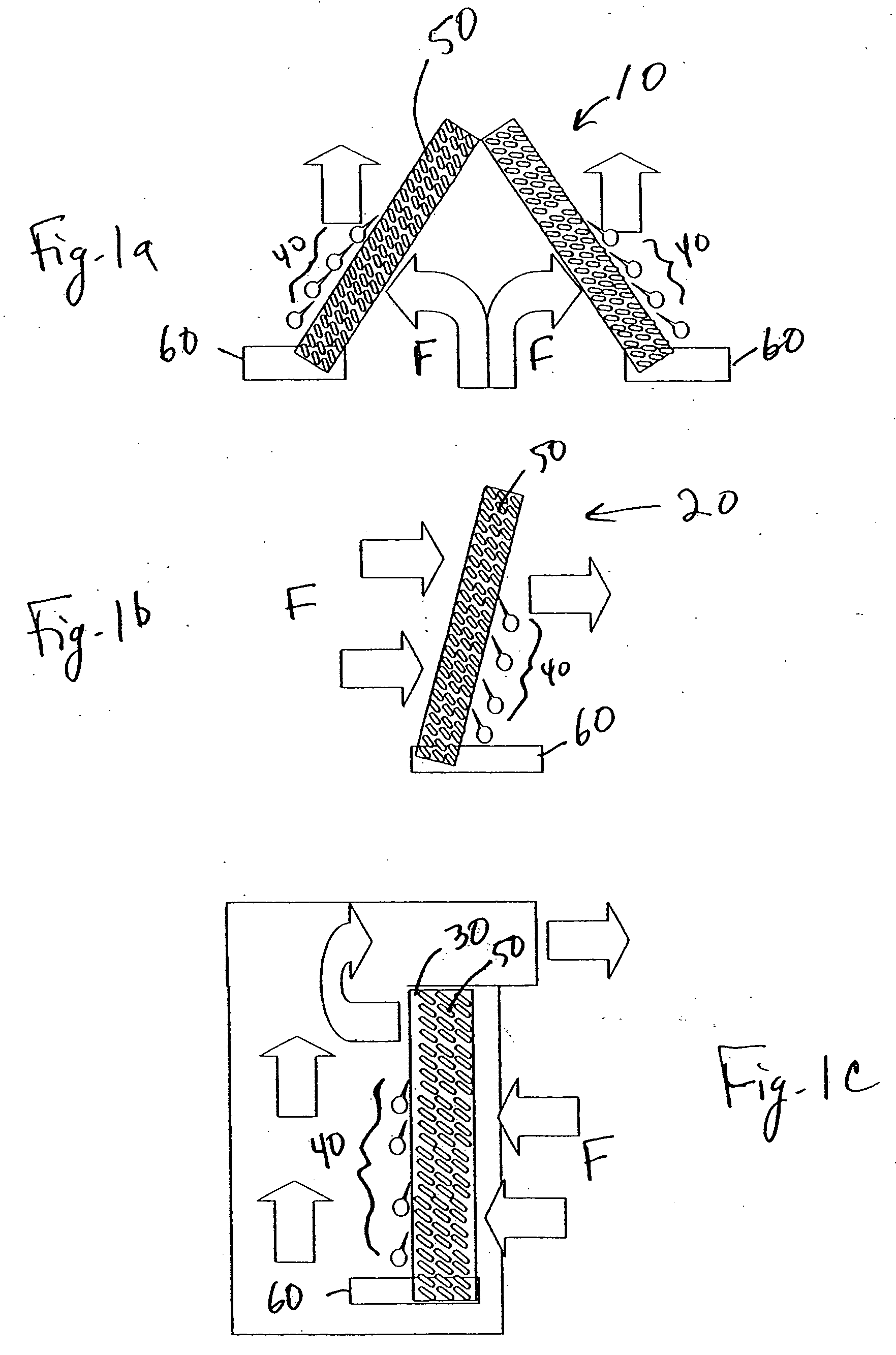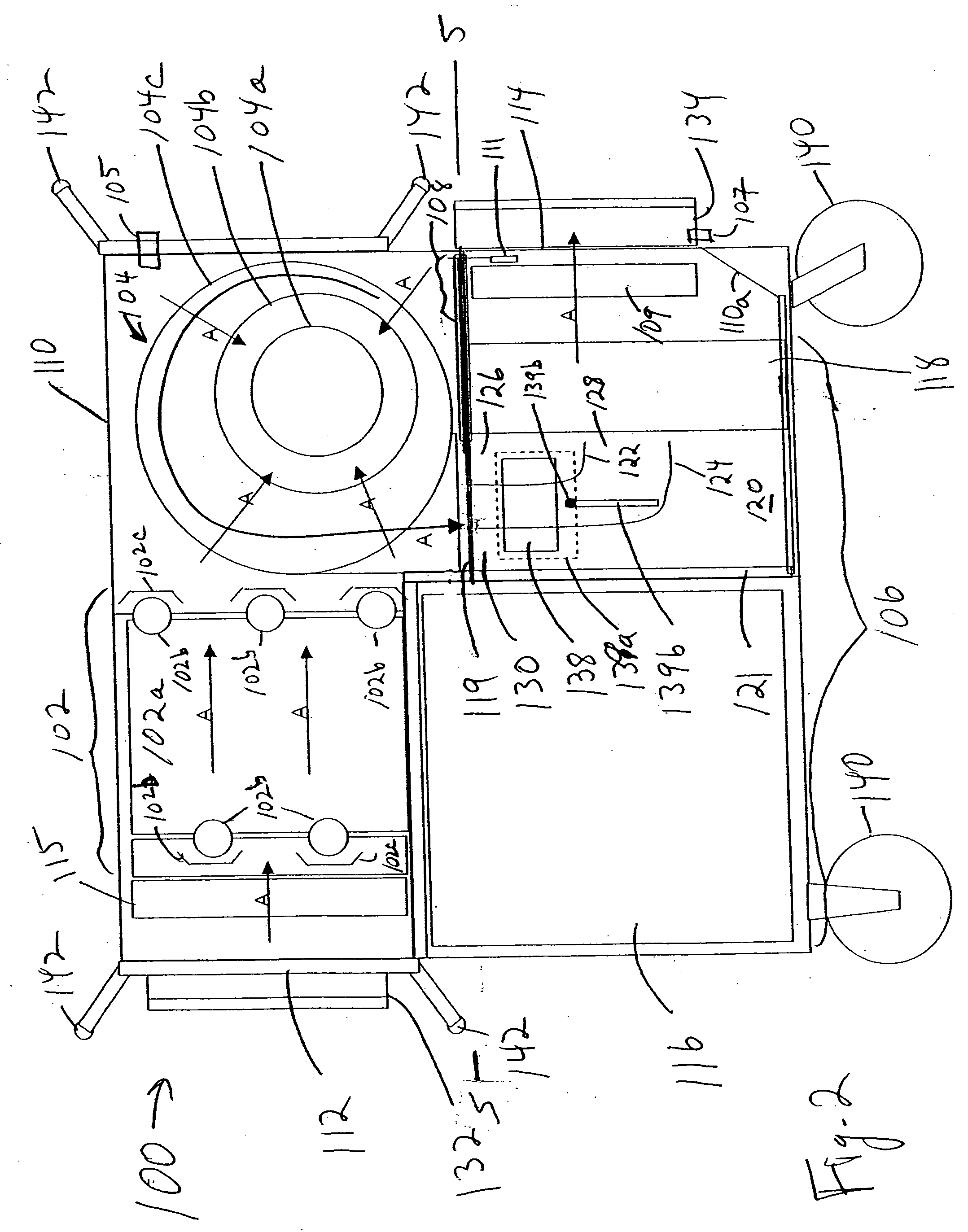Integrated air processing devices and isolation containment systems using such devices
a technology of integrated air processing and isolation containment system, which is applied in combination devices, dispersed particle filtration, hospitals, etc., can solve the problems of difficult for a single air processing unit to provide both heating and cooling, air conditioning and heating devices used in hostile environments, and can be easily contaminated, so as to reduce the airflow, slow down the airflow through the evaporator, and reduce the effect of airflow
- Summary
- Abstract
- Description
- Claims
- Application Information
AI Technical Summary
Benefits of technology
Problems solved by technology
Method used
Image
Examples
Embodiment Construction
[0038] In one embodiment of the invention, an integrated air processing device comprises air decontamination, heating, and air conditioning sections to provide air decontamination, heating, ventilation, and cooling, within a single body. Such a device is referred to herein as an “ADHVAC.” In another embodiment, an integrated air processing device comprises heating and cooling sections, also within a single body. Such a device is referred to as an “IHVAC.” The body in each case may comprise a housing having one or more integrated housing sections. As discussed above, in the ventilation of portable structures, heating, air conditioning and air decontamination are typically provided by separate units and air decontamination is typically not provided.
[0039] In another embodiment of the invention, a portable isolation containment system (“PICS”) comprises a portable isolation enclosure (“PIE”), such as a tent, and an ADHVAC or IHVAC device coupled to the PIE. The ADHVAC or IHVAC may be ...
PUM
| Property | Measurement | Unit |
|---|---|---|
| Time | aaaaa | aaaaa |
| Pressure | aaaaa | aaaaa |
| Flow rate | aaaaa | aaaaa |
Abstract
Description
Claims
Application Information
 Login to View More
Login to View More - R&D
- Intellectual Property
- Life Sciences
- Materials
- Tech Scout
- Unparalleled Data Quality
- Higher Quality Content
- 60% Fewer Hallucinations
Browse by: Latest US Patents, China's latest patents, Technical Efficacy Thesaurus, Application Domain, Technology Topic, Popular Technical Reports.
© 2025 PatSnap. All rights reserved.Legal|Privacy policy|Modern Slavery Act Transparency Statement|Sitemap|About US| Contact US: help@patsnap.com



